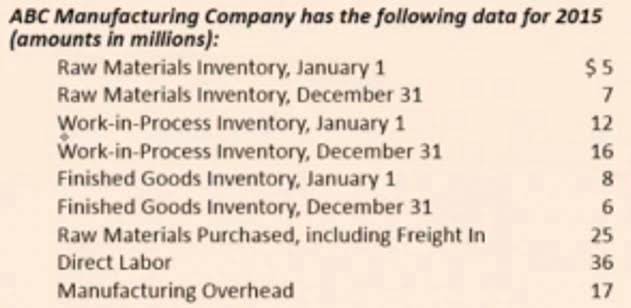Conversion cost What is Conversion Cost and How to Calculate It

Suppose that the cost of the raw materials—lumber, hardware, and paint—totals $200. The furniture maker charges $50 per hour for labor, and the project takes three hours to complete. Conversion costs play a key role in determining the Cost of Goods Sold (COGS), influencing the pricing strategy.
1 Automobile Manufacturing
In short, it is the cost of a product incurred by a AI in Accounting company while manufacturing it. Direct labor costs are a critical component of conversion costs, representing the wages and benefits paid to workers directly engaged in the production process. These individuals contribute their time, skills, and effort directly to the manufacturing of goods. Examples of direct labor include assembly line workers, machine operators, and technicians. Calculating direct labor costs involves multiplying the total hours worked by the applicable wage rate, including any additional benefits or allowances. These examples illustrate how the conversion cost formula and per unit cost can be applied to different scenarios.
Conversion Cost Examples
With the insights provided in this article, you can now efficiently calculate your conversion costs and optimize your production processes for greater profitability. Conversion costs are a crucial aspect of manufacturing and production processes, representing the expenses incurred in transforming raw materials into finished goods. Understanding conversion costs is essential for businesses to effectively manage their production costs and optimize operational efficiency. In this article, we’ll delve into what conversion costs are, provide the formula for calculating them, and offer examples to illustrate their application. The only direct material added in the packaging department for the 5A sticks is packaging.
Sales Discovery Questions: A Complete Guide
Manufacturing cost is the cost that company spends to support the production process but they cannot allocate to each product. They are the indirect cost that incurs to support the manufacturing, but it is very challenging to apply the cost to each production unit. By using conversion costs, we can calculate an efficient way of determining equivalent units and unit costs. Conversion cost is the cost incurred by any manufacturing entity in converting its raw material into finished goods capable of being sold in the market.


A language barrier or a lack of clear communication channels can result in errors, misunderstandings, and production delays. These challenges can increase the total conversion cost of producing a product. Automation can increase manufacturing flexibility by allowing manufacturers to switch between products or product lines quickly. This can reduce the cost of retooling assets = liabilities + equity and setup time, increasing production output and reducing conversion costs. Assume that direct materials cost $700, direct labor is $500, and factory overhead is $300 for cabinets that have been manufactured. Direct labor is the cost of wages of factory employees who assemble the cabinets.
How Does the Use of Technology Impact Conversion Cost in Accounting? – The Importance of Conversion Cost in Accounting

A small electronics manufacturer pays $5,000 per month for factory rent, $1,000 for utilities, and $2,000 for equipment maintenance. Direct material cost encompasses the expenses related to raw materials used in production. Examples include steel in construction, plastic in injection molding, or flour in baking.
- The total materials costs for the period (including any beginning inventory costs) are computed and divided by the equivalent units for materials.
- Manufacturing overheads used in calculating conversion costs are the overheads that cannot be attributed to the production process or a single unit in production, for example, rent or electricity.
- Direct labor includes wages and benefits for workers directly involved in production, such as assembly line workers and machine operators.
- The packaging department for Rock City Percussion completed \(6,500\) units and transferred them into finished goods inventory.
- Conversion costs reflect a company’s total amount spent converting raw materials into fully-furbished products.
In a common scenario, all direct materials costs are incurred at the beginning of the process. For example, a bunch of sheet metal is placed in a machine (which then converts the sheet metal into the finished product). Or, a block of wood is placed on the assembly line (where worked then convert it into the finished product). Labor and overhead costs, in these examples, are incurred only after there’s a piece of metal in the machine or a block of wood on the assembly line to work on. We call the sum of labor and overhead conversion costs because they are costs incurred to convert raw materials into finished goods.
If your conversion goal is more than just a website visit, look at your landing pages. Confirm that the landing page is relevant to the viewers and encourages them to complete the action that is your goal. For example, if your conversion metric is signing up for your email list, the signup form should be prominent. How to assess conversion cost if it is watching a video, the video should be prominent. In summary, direct labor costs significantly impact a company’s bottom line.
- Understanding and calculating this cost is essential for businesses to ensure they can accurately price their products and manage their operations efficiently.
- Investing in technology and automation can reduce labor costs and improve efficiency.
- This leads to the very-important term total equivalent units (which I will sometimes abbreviate as TEU).
- Using sensors and other monitoring technologies, manufacturers can identify and address issues contributing to material waste, such as overproduction, defects, and machine breakdowns.
- By including direct labor and manufacturing overhead, conversion costs provide valuable insights into production efficiency and cost structure.
- A similar process is used to account for the costs completed and transferred.
Remember that you can define conversion however you want, such as the number of sales and number of signups for your email list. That amount is either debited to the next department’s WIP account or to finished goods (if this is the last department in the production chain). (1) Get a pot of water out (equipment and water costs are likely overhead). While this is conversion costs indeed the basic structure of process costing, there are three big complications. A software-as-a-service (SaaS) company offers subscription plans with different features (basic, premium, enterprise).
Responses